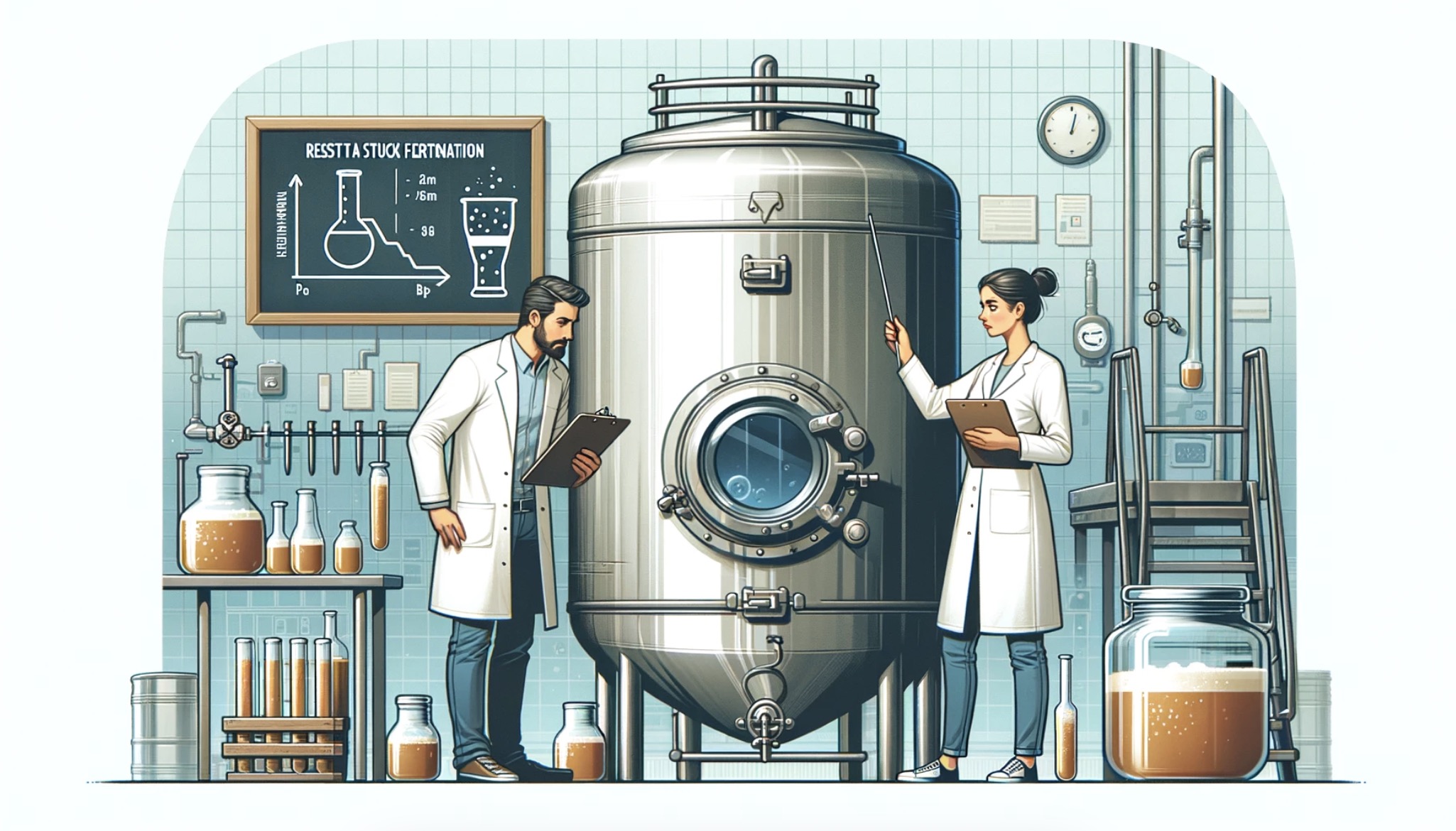The proofing process is crucial in moonshine production as it determines the alcohol content and overall quality of the final product. Proper proofing ensures a consistent taste and potency.
Traditional methods of proofing moonshine include using a hydrometer or a proofing parrot. These tools provide accurate measurements of the alcohol content, allowing the distiller to make necessary adjustments.
The four most common methods for proofing moonshine are:
- Hydrometer: This method uses specific gravity measurements to determine the alcohol content of moonshine. A hydrometer is a device that measures the density of a liquid, and by comparing the density of moonshine to that of water, you can calculate its proof.
- Flame Test: The flame test involves igniting a small amount of moonshine and observing the intensity and color of the flame produced. The size and characteristics of the flame can provide an indication of the alcohol content.
- Evaporation: Evaporation proofing involves measuring the time it takes for a sample of moonshine to evaporate. Slower evaporation typically indicates a higher alcohol content, as alcohol evaporates more slowly than water.
- Taste Test: The taste test is a sensory examination where experienced individuals taste the moonshine and discern its alcohol content based on flavor and alcohol “burn.” This method relies on the taster’s ability to detect the strength of the alcohol through their palate.
- Shake Test: According to this method, moonshine with a higher alcohol content will produce larger bubbles that linger for a longer time after shaking, while lower-proof moonshine will generate smaller bubbles that dissipate more quickly.
Common questions about proofing moonshine include how to calculate the desired proof, when to perform the proofing process, and how to adjust the proof if necessary. It is important for distillers to understand these aspects to produce high-quality moonshine.
The Importance of Proofing Moonshine
Proofing Moonshine: Ensuring Safety and Quality Control Moonshine production requires meticulous attention to detail, particularly when it comes to proofing.
Proper proofing of moonshine is of paramount importance to guarantee its safety and ensure the production of high-quality spirits. Proofing moonshine involves determining its alcohol content, typically measured in ABV (Alcohol By Volume).
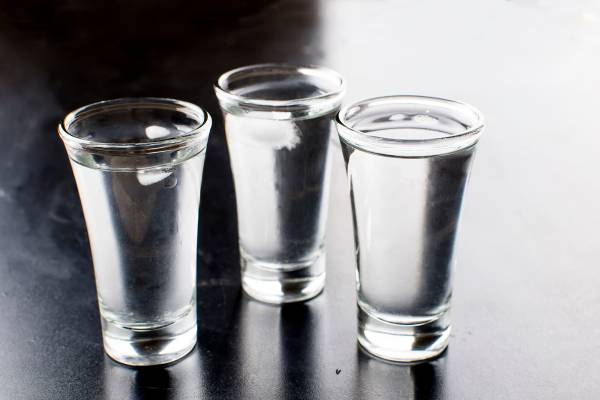
This is crucial as it affects not only the taste and potency of the moonshine but also its safety for consumption. Incorrectly proofed moonshine can have adverse effects on individuals, leading to health risks and even potential legal consequences for distillers.
By accurately proofing moonshine, distillers can maintain consistency in their product and meet safety standards.
It minimizes the chances of producing excessively potent or weak batches, ensuring consumers receive a consistent experience.
Additionally, proofing allows distillers to dilute the moonshine to a desired strength, achieving a flavor profile that aligns with customer preferences.
Historically, a lack of proper proofing led to various issues in moonshine production. During the Prohibition era in the United States, unregulated and poorly made moonshine posed a significant health risk.
It often contained high levels of impurities, including harmful substances like lead and methanol. The consequences ranged from blindness and sickness to even death in extreme cases.
Traditional Methods of Proofing Moonshine
Traditional Techniques for Verifying the Purity of Homemade Moonshine
Crafting homemade moonshine requires a meticulous process, and ensuring its quality is crucial. Here, we explore various time-honored approaches used to verify the alcohol content in moonshine, employing traditional methods that have stood the test of time.
| Method | Description |
|---|---|
| Hydrometer | Uses specific gravity measurements to determine the alcohol content of moonshine. |
| Flame Test | Evaluates the intensity and color of the flame produced when the moonshine is ignited. |
| Evaporation | Measures the time taken for moonshine to evaporate, with slower evaporation indicating higher proof. |
| Taste Test | A sensory examination to discern the alcohol content in moonshine based on its flavor. |
| Shake Test | A somewhat anecdotal test that relies on experience in assessing bubble size after shaking. |
Apart from these commonly employed methods, additional approaches may also be used for verifying the proof of moonshine, such as the use of chemical indicators and complex laboratory techniques.
These traditional techniques provide valuable insights into the alcohol content, allowing moonshine enthusiasts to ensure its potency and quality.
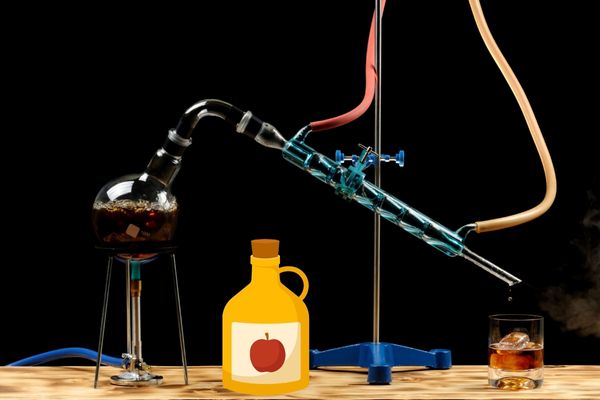
Historically, during the prohibition era in the United States, moonshine production and consumption flourished. This clandestine industry necessitated the development of various methods to proof the homemade liquor.
These techniques were passed down through generations and have become an integral part of moonshine culture, showcasing the resourcefulness and ingenuity of individuals dedicated to crafting fine spirits.
1. Hydrometer Method for Proofing Moonshine
The hydrometer method is a fundamental and widely-used technique for determining the alcohol content, often referred to as proof, in moonshine and other distilled spirits.
This method relies on the principle of specific gravity, which measures the relative density of a liquid compared to the density of water. By assessing the specific gravity of moonshine, one can calculate its alcohol by volume (ABV) or proof.
How a Hydrometer Works
A hydrometer is a slender, sealed glass tube with a weighted bulb at the bottom and a graduated scale along its stem.
The hydrometer is designed to float in a liquid, with the graduated scale indicating the liquid’s specific gravity. Here’s how the hydrometer method for proofing moonshine works:
- Initial Measurement: Initially, a sample of moonshine is collected in a suitable container, such as a hydrometer jar or cylinder. The hydrometer is carefully lowered into the liquid, and it will float freely, with a portion of the stem submerged in the moonshine.
- Reading Specific Gravity: The hydrometer’s scale is read at the point where it intersects the surface of the liquid. The scale is calibrated to be accurate at a specific temperature, often 60°F (15.6°C). The specific gravity reading obtained is then recorded.
Calculating Alcohol Content
The specific gravity reading obtained from the hydrometer is used to estimate the alcohol content of the moonshine. The key idea is that as the alcohol content increases, the specific gravity of the liquid decreases. Here’s how the calculation is performed:
- Initial and Final Readings: Take two specific gravity readings: one before fermentation or distillation (the “initial” reading) and another after fermentation or distillation (the “final” reading).
- Calculate the Difference: Subtract the final specific gravity reading from the initial reading to determine the change in specific gravity.
- Use a Hydrometer Conversion Table: Consult a hydrometer conversion table or formula specific to your hydrometer to convert the change in specific gravity into alcohol content, typically expressed as a percentage of alcohol by volume (ABV) or proof.
Interpretation
The resulting alcohol content obtained through the hydrometer method provides a quantitative measure of the moonshine’s strength.
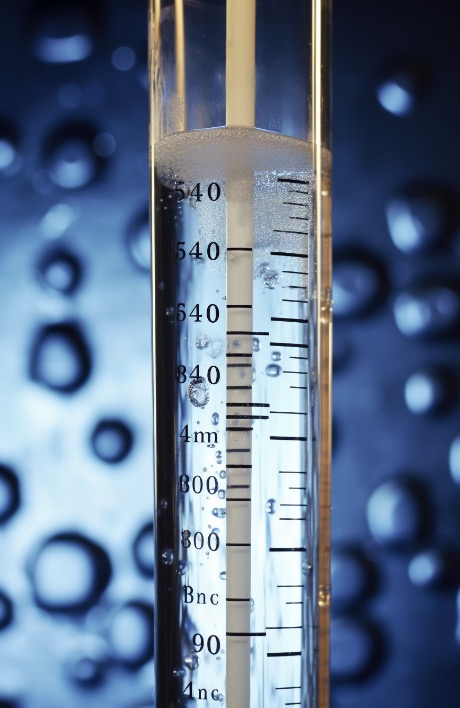
The proof is often expressed as a percentage of alcohol by volume (ABV) or in the traditional “proof” scale, which is twice the ABV. For example, a moonshine with 50% ABV is 100 proof.
Accuracy and Considerations
It’s important to note that the accuracy of the hydrometer method depends on several factors, including the quality and calibration of the hydrometer, temperature correction, and the presence of impurities that may affect specific gravity readings.
Therefore, for precise measurements and legal compliance, commercial distillers often employ more advanced and standardized methods.
In summary, the hydrometer method is a valuable tool for enthusiasts and hobbyist distillers to estimate the proof of moonshine. It relies on the principles of specific gravity and is relatively easy to perform with the right equipment.
However, for commercial and regulatory purposes, more precise methods may be necessary to ensure accurate alcohol content determination.
2. Flame Test Method for Proofing Moonshine
The Flame Test method is a traditional technique employed to estimate the alcohol content or proof of moonshine.
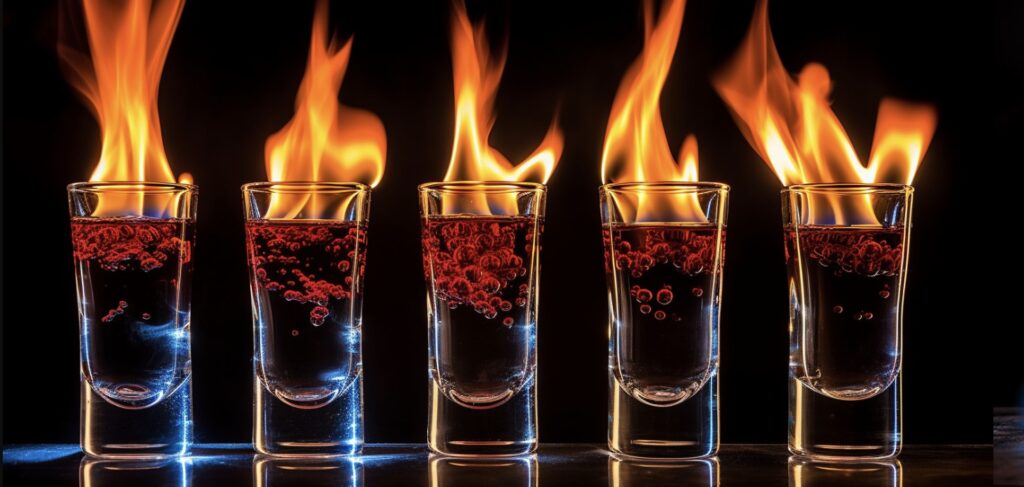
This method relies on the observation of the flame produced when a small sample of moonshine is ignited. While it lacks the precision of laboratory equipment, it offers a qualitative assessment of the alcohol strength.
Principle of the Flame Test
The Flame Test method is based on the fundamental principle that different concentrations of alcohol in a liquid produce distinct flame characteristics when ignited. When moonshine is burned, the alcohol content influences the intensity, color, and behavior of the flame. This method takes advantage of these variations to make a rough estimation of the proof.
Procedure
To perform the Flame Test for moonshine proofing, follow these steps:
- Prepare the Moonshine Sample: Take a small sample of moonshine in a fire-safe container. Ensure the container is clean and free from any contaminants that could affect the results.
- Ignite the Moonshine: Carefully ignite the moonshine sample using an open flame source, such as a lighter or a matchstick.
- Observe the Flame:
- Intensity: Note the brightness and intensity of the flame. Higher alcohol content usually results in a brighter and more vigorous flame.
- Color: Observe the color of the flame. Alcohol flames tend to be blue or bluish in color. The presence of impurities or other substances may influence the flame’s color.
- Duration: Observe how long the flame persists after ignition. Higher proof moonshine tends to sustain the flame for a longer duration.
Interpretation
Interpreting the results of the Flame Test requires experience and careful observation.
| Flame Characteristic | Approximate Alcohol Proof Range |
|---|---|
| Bright and Intense | 170-190 proof and higher |
| Moderate Brightness | 140-170 proof |
| Dim or Weak | 100-140 proof |
| Faint or Almost Invisible | Below 100 proof |
Here are some general guidelines:
- Brighter Flame: A brighter flame often indicates a higher alcohol content or proof.
- Blue Flame: A blue or bluish flame is typical of alcohol combustion, so it suggests the presence of alcohol. However, other factors like impurities or contaminants can also affect flame color.
- Longer Duration: Moonshine with a higher alcohol content tends to sustain the flame for a longer time.
Limitations
The Flame Test method has several limitations:
- It provides only a qualitative assessment of alcohol content and proof.
- The results can be influenced by impurities or contaminants in the moonshine.
- The method is subjective and relies on the observer’s judgment.
- It may not provide accurate proof measurements, and for legal or commercial purposes, more precise methods are necessary.
The Flame Test method is a simple yet subjective technique for estimating the proof of moonshine. While it lacks the precision of laboratory methods, it can be a useful tool for moonshiners and enthusiasts to get a rough idea of the alcohol content in homemade spirits.
However, for precise measurements and legal compliance, more accurate proofing methods such as hydrometer testing or professional laboratory analysis are recommended.
3. Evaporation Method for Proofing Moonshine
The evaporation method is one of the traditional techniques used to estimate the alcohol content or proof of moonshine.
This method relies on the principle that alcohol evaporates at a faster rate than water.
By carefully observing and measuring the time it takes for a sample of moonshine to evaporate, one can make an approximate determination of its alcohol content, with slower evaporation suggesting a higher proof.
Principles of the Evaporation Method
1. Differential Evaporation Rates
The fundamental principle underlying the evaporation method is the difference in the evaporation rates between alcohol and water.

Alcohol has a lower boiling point compared to water, which means it tends to evaporate more quickly.
As a result, moonshine with a higher alcohol content will generally evaporate faster than lower-proof moonshine or water.
2. Controlled Testing Environment
To perform the evaporation method accurately, it is essential to create a controlled testing environment. This typically involves:
- Standardized Conditions: Ensuring that the room temperature and humidity are constant throughout the testing process to maintain consistency.
- Uniform Sample Size: Using a consistent sample size of moonshine in each test, typically in a small, clear glass container.
- Covered Container: Placing a lid or cover on the container to prevent the escape of alcohol vapors and maintain a closed system.
Steps to Perform the Evaporation Test
Here are the general steps to perform the evaporation test for estimating the proof of moonshine:
- Prepare the Sample: Pour a uniform and measured amount of moonshine into a clear glass container. The container should be clean and free from any contaminants.
- Record the Starting Time: Begin the test by recording the exact time when the moonshine is placed in the testing environment.
- Observe Evaporation: As time passes, carefully observe the moonshine for signs of evaporation. Note any changes in the liquid level or the formation of condensation on the container’s interior.
- Record the End Time: When you believe that all the alcohol has evaporated (or after a predetermined period), record the end time.
- Calculate the Proof: Calculate the estimated proof of the moonshine using the time it took to evaporate. Slower evaporation typically indicates higher alcohol content.
Limitations of the Evaporation Method
While the evaporation method provides a rough estimate of moonshine proof, it has several limitations:
- Subjectivity: The method relies on human observation and judgment, making it somewhat subjective. Different individuals may interpret the endpoint differently.
- Environmental Factors: Changes in temperature and humidity can affect evaporation rates, potentially leading to inconsistent results.
- Estimation: The method provides only an estimate of proof and is not as accurate as more precise laboratory techniques.
- Safety: Handling flammable alcohol in open containers carries some safety risks, especially if open flames or sparks are present in the testing area.
The evaporation method for proofing moonshine is a traditional and straightforward approach to estimate alcohol content based on differential evaporation rates.
While it can provide a rough indication of moonshine proof, it should be used cautiously and is not a substitute for more precise methods such as hydrometer readings or laboratory analysis, which offer greater accuracy and reliability in determining the true alcohol content of distilled spirits.
4. The Taste Test Method for Assessing Moonshine Proof
The taste test method is a subjective but often relied upon technique for assessing the alcohol content, or “proof,” of moonshine.

Unlike quantitative methods such as hydrometer readings or laboratory analyses, the taste test primarily relies on the human senses, particularly the sense of taste and smell.
It involves experienced individuals or experts in the field of distillation sampling moonshine to discern its alcoholic strength based on flavor, aroma, and sensory characteristics.
The Art of Moonshine Tasting
1. Tasting Environment: To perform a reliable taste test, it is crucial to create a controlled tasting environment free from strong odors or distractions. Ideally, this is done in a well-ventilated room with proper glassware.
2. Glassware: Tasters typically use specialized glassware, such as tulip-shaped glasses, to concentrate and enhance the aromas. The choice of glass can significantly impact the tasting experience.
3. Appearance: The first step in moonshine tasting is to assess its visual appearance. Tasters look for clarity, color, and any sediments or impurities that may be present.
4. Aroma: A significant part of the tasting process involves evaluating the aroma or “nose” of the moonshine. Tasters inhale the vapors gently and note the various scents, which can range from fruity and floral to more complex notes like vanilla or oak, depending on the ingredients and aging process (if applicable).
5. Flavor Profile: The heart of the taste test is assessing the flavor profile. Tasters take a small sip and let the moonshine coat their palate. They analyze the taste, searching for attributes like sweetness, bitterness, acidity, and most importantly, the presence and intensity of alcohol burn. A higher proof moonshine will exhibit a more pronounced alcohol burn.
6. Finish: The “finish” refers to the lingering taste and sensations after swallowing the moonshine. Tasters consider factors such as the length of the finish and whether it leaves a pleasant or harsh aftertaste.
Subjectivity and Expertise
The taste test method is inherently subjective and relies heavily on the expertise and experience of the taster. Experienced moonshiners and distillers develop a keen palate over time, allowing them to discern subtle differences in alcoholic strength based on taste and aroma. However, this subjectivity also introduces variability, as individual preferences and sensitivities can influence the assessment.
Limitations of the Taste Test
While the taste test can provide valuable insights into the flavor and alcoholic strength of moonshine, it is not a precise or standardized method for determining proof. Factors such as the taster’s palate, environmental conditions, and personal biases can lead to variations in results. Additionally, the taste test cannot provide a specific numeric proof value, making it less suitable for regulatory or commercial purposes.
A Complementary Method
In practice, the taste test is often used in conjunction with other quantitative methods like hydrometer readings to refine the assessment of moonshine proof. By combining sensory evaluation with precise measurements, moonshiners and enthusiasts can obtain a more comprehensive understanding of their product’s quality and strength.
In summary, the taste test method for assessing moonshine proof is a nuanced and artful approach that relies on the sensory expertise of individuals. While it cannot provide precise proof values, it plays an essential role in the craft of moonshine production and evaluation, allowing for a deeper exploration of flavor and aroma characteristics.
5. The Shake Test Method for Proofing Moonshine
In the world of moonshine production and tasting, there exists a method known as the “shake test” that has been passed down through generations of moonshine veterans.
This informal technique is rooted in the belief that the appearance and behavior of bubbles formed after shaking a jar of moonshine can provide insights into the alcohol content and, by extension, the proof of the liquid.
Understanding the Shake Test
The shake test is based on the principle that the presence, size, and persistence of bubbles formed in the moonshine can offer a rough estimation of its alcohol content.
According to this method, moonshine with a higher alcohol content will produce larger bubbles that linger for a longer time after shaking, while lower-proof moonshine will generate smaller bubbles that dissipate more quickly.
Interpreting the Results
1. Larger Bubbles: Moonshine with a higher alcohol content is believed to produce larger bubbles. These bubbles are thought to form due to the volatile nature of alcohol. When the jar is shaken, the alcohol vapors trapped in the liquid escape, creating larger bubbles.
2. Slower Dissipation: Another key aspect of the shake test is the rate at which the bubbles dissipate. Moonshine with higher alcohol content is said to retain its bubbles for a longer time before they disappear. This is often described as the “legs” of the liquid, which are the streaks or lines formed by the slowly receding bubbles on the inside surface of the container.
3. Smaller Bubbles: Conversely, moonshine with a lower alcohol content is believed to produce smaller bubbles that vanish more quickly. This is attributed to the lower alcohol content, which results in fewer alcohol vapors escaping when the jar is shaken.
Limitations and Subjectivity
It’s essential to acknowledge that the shake test is a highly subjective and informal method for estimating the proof of moonshine. Unlike more precise techniques such as the hydrometer or laboratory analysis, the shake test relies on personal observation and interpretation. Therefore, results can vary based on an individual’s experience and perception.
Complementing Other Proofing Methods
While the shake test may be a fun and traditional way for moonshine enthusiasts to gauge the alcohol content of their homemade spirits, it should not be relied upon as the sole method for determining proof.
To ensure accuracy and consistency, it is advisable to complement the shake test with more established and scientifically sound proofing methods such as the hydrometer, flame test, or evaporation test.
In conclusion, the shake test is a nostalgic and anecdotal method passed down through the moonshining community. While it may provide a rough estimate of alcohol content based on bubble size and persistence, it is not a substitute for more accurate and reliable proofing techniques.
Proofing Parrots
What is a proofing parrot and how does a proofing parrot help estimate to proof of moonshine?
A “proofing parrot” in the context of distillation, particularly for spirits like moonshine, is a device that allows distillers to monitor the proof or alcohol content of the distillate as it comes out of the still. It’s not a real parrot; the term “parrot” is just a colloquialism for this particular tool.
The proofing parrot consists of a collection tube that the distillate flows through, attached to a hydrometer chamber.
As the liquid flows into this chamber, a hydrometer floats in the chamber, and its reading provides an indication of the alcohol content of the liquid.
The hydrometer measures the specific gravity of the fluid, which is then used to infer the alcohol content.
To estimate the proof of moonshine using a proofing parrot and hydrometer:
- Distillation: As you run your still, the distillate will flow through the proofing parrot.
- Hydrometer Reading: The hydrometer inside the parrot will float at a level that corresponds to the specific gravity of the distillate.
- Proof Calculation: Using the reading on the hydrometer, you can determine the alcohol content, or “proof”, of the distillate. For example, a reading of 80 on a proof hydrometer would indicate that the distillate is 80 proof, or 40% alcohol by volume.
Remember that the reading on the parrot can vary throughout a distillation run. Typically, the initial distillate (the “heads”) will have a higher proof, which will gradually reduce as you move through the “hearts” and finally to the “tails” of the run.
However, it’s crucial to understand that this method provides an estimate, and other factors can influence the reading. Calibration, temperature, and the specific design of the hydrometer can all impact the accuracy of the proof reading.
For precise measurements, especially for commercial production, more accurate methods and tools would be needed.
Conclusion and Tips for Successfully Proofing Moonshine
Proofing moonshine is an essential step in the distillation process to ensure the desired alcohol content is achieved.
To successfully proof moonshine, follow these expert tips. Firstly, use a hydrometer to measure the specific gravity of the liquid, allowing you to calculate the alcohol content accurately.
Secondly, age the moonshine in oak barrels for a smoother and more refined flavor profile. Additionally, it is crucial to maintain proper storage conditions, such as storing the jars in a cool, dark place.
Finally, ensure proper labeling of your moonshine bottles to avoid any confusion or mishaps. By following these tips, you can ensure the successful proofing of your moonshine and enjoy a high-quality and flavorful end product.
Remember, the devil is in the details. Small yet crucial factors can have a significant impact on the final product. For example, using a proper hydrometer guarantees accurate measurements, resulting in precise proofing.
Furthermore, the oak barrels not only add flavor but also contribute to the aging process, allowing the moonshine to mellow and develop desirable characteristics. Proper storage conditions prevent oxidation and maintain the integrity of the moonshine.
Always label your bottles clearly with the alcohol content and any necessary warnings to ensure safe consumption.
Beyond the technical aspects, there is an art to proofing moonshine. Each distiller develops their own style, experimenting with different ingredients and techniques. This creativity allows for unique flavors and experiences.
Embrace the journey of mastering the craft, continuously seeking improvement. Joining distillation communities, attending workshops, and learning from experienced moonshiners can further enhance your knowledge and skill.
Don’t miss out on the opportunity to create exceptional moonshine. By following these tips, you can master the art of proofing and take pride in creating your own high-quality spirits.
Additionally, if you are considering distilling spirits at home, it’s essential to check the laws and regulations in your area, as distillation for consumption can be illegal or heavily regulated in many places. Safety precautions are also crucial when distilling, given the risk of fire, explosion, and producing potentially harmful substances.
Five Facts About Proofing Moonshine:
- ✅ Proof is a measurement that tells you how much alcohol is in a liquid.
- ✅ Proof was first used in 16th century England to tax alcoholic drinks based on their alcohol content.
- ✅ The ‘shake test’ is a technique used by moonshiners to estimate the proof of their moonshine.
- ✅ The shake test involves shaking a bottle of moonshine and observing the size and disappearance rate of bubbles.
- ✅ Hydrometers are commonly used by distillers to accurately measure the proof or ABV of moonshine.
FAQs about Proofing Moonshine
What is the target proof when proofing moonshine?
The target proof when proofing moonshine is the desired level of alcohol content in the liquid. Achieving the target proof gives you bragging rights and allows you to share the strength of your moonshine with your friends.
What happens if you don’t reach your target proof when proofing moonshine?
If you don’t reach your target proof when proofing moonshine, you’ll have to go back to the drawing board. It means that your moonshine didn’t turn out as strong as you wanted it to be, and you’ll need to make adjustments and try again to reach the desired proof.
How was alcohol proof measured in 16th century England?
In 16th century England, alcohol proof was measured by tax collectors who used two methods. They would attempt to light the spirit on fire, and if it burned, it was considered ‘above proof’ and taxed as liquor. They also used the ‘gunpowder test’, where if gunpowder soaked in the solution could still combust, it was labeled as over proof or ‘100 proof’.
What is the shake test method for proofing moonshine?
The shake test method is a technique used by moonshiners to determine the proof of a spirit. It involves placing some moonshine in a mason jar and shaking it vigorously. If the spirit has large bubbles that disappear quickly, it indicates a higher proof. If the spirit has small bubbles that disappear slowly, it indicates a lower proof. This test works because alcohol molecules are larger and less dense than water molecules, causing the bubbles to behave differently.
How do hydrometers work in proofing moonshine?
Hydrometers are sealed glass instruments used to measure the proof or ABV (alcohol by volume) of a spirit. They work by measuring the density of the spirit compared to the density of water. A proofing hydrometer is used to measure the final alcohol content of your distilled moonshine, while a brewing hydrometer measures the potential alcohol content of a moonshine mash. By floating the hydrometer in the moonshine, you can read the ABV/proof on the side to determine the strength of the spirit.
What is a copper moonshine parrot and how is it used in proofing moonshine?
A copper moonshine parrot is a vessel that is placed between the still and a collection vessel in the distillation process. It has an inlet to receive distillate from the still, a chamber to hold a hydrometer, and an outlet to send distillate to a collection jar. The parrot allows you to see the proof of the spirit as it is being produced, helping you make cuts during the run and keeping track of the alcohol content. It enhances the accuracy and efficiency of proofing moonshine.





